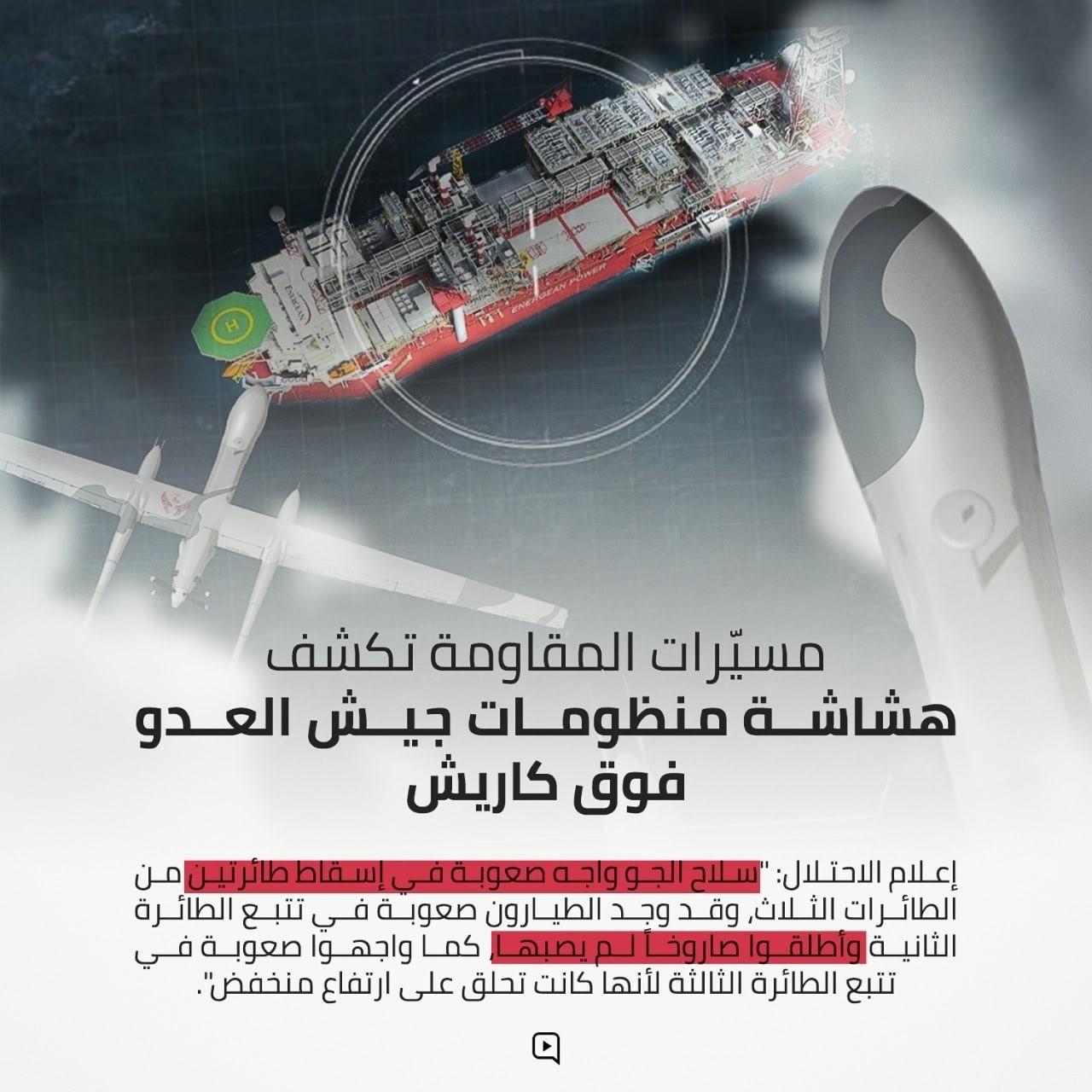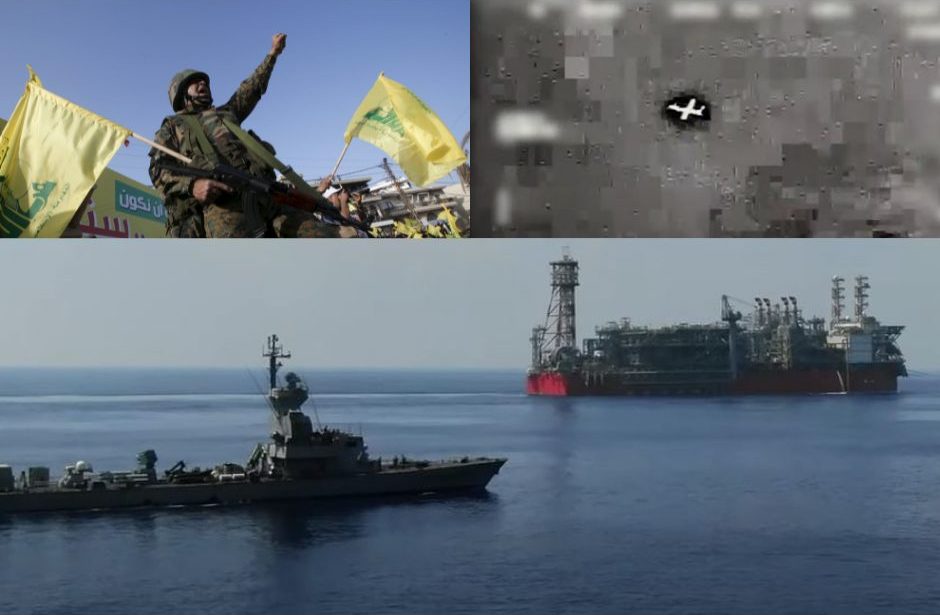Publications
INSS Insight No. 1616, July 11, 2022
A campaign is underway between Israel and Hezbollah over air control in the skies of Lebanon and northern Israel, which the organization expanded to Israel’s exclusive economic zone when it launched three unmanned aerial vehicles toward the Israeli drilling rig in the Karish gas field. Israel should consider leveraging the current struggle in the aerial dimension and respond to Hezbollah’s provocation by striking the Iranian air defense systems in Lebanon that were supplied to the organization. This would signal to the organization and to its sponsor that Israel is not deterred from conflict and will not continue its restraint in the face of Hezbollah’s expanding the boundaries and intensity of the campaign.
On the afternoon of Saturday July 2, 2022, Hezbollah launched three unmanned aerial vehicles (UAVs) over the Mediterranean Sea toward the drilling rig in the Karish natural gas field, located in Israel’s exclusive economic zone (EEZ) that is recognized by the international system. The UAVs flew slowly at a low altitude in order to make it difficult for Israel's early warning radar systems to locate and identify them, but the IDF detected and intercepted them using a fighter aircraft and Barak missiles launched from an Israeli navy ship. In the assessment of Israeli military sources, the UAVs were not carrying explosive materials, as no secondary explosions were identified during their interception.
Thanks to the discovery of the gas fields in its EEZ about two decades ago, in the past few years Israel has started to produce an amount of gas sufficient for local demand and for export to Egypt, Jordan, and soon also to Europe. The drilling rig in the Karish field was anchored several kilometers south of the area in which there is a dispute between Israel and Lebanon regarding the boundary between the two countries’ respective EEZs. The precise maritime border is now under negotiation between Israel and Lebanon with the mediation of the United States, in order to reach agreement on the maritime line and the respective use of the offshore energy fields.
Apparently, Hezbollah's purpose was to threaten Israel by demonstrating its ability to penetrate the area of the rig and even to threaten attacking it in the future, as well as to present aerial photographs as part of the organization's propaganda. Specifically, Hezbollah's goals are:
- To present itself as defending the interests of Lebanon's and looking out for its energy future.
- To prove that it is not afraid of Israel and is willing to confront and embarrass it by presenting its ability to attack the Israeli gas fields in the Mediterranean Sea.
- To increase the tension in the context of the dispute regarding the demarcation of the maritime border between Israel and Lebanon and the distribution of offshore energy resources, and at the same time to deter foreign companies from investing in projects serving Israel.
- To improve positions vis-à-vis the United States in the framework of the administration's mediation efforts, or alternatively, to thwart the possibility of reaching an agreement – whereby Hezbollah would lose its advantages in transferring Iranian oil via Syria to Lebanon and in it deciding how it is distributed.
It seems that the organization proceeded from an assumption of a low probability of an Israeli response at the present time, due to the weakness of the political system in Israel and its preference to maintain restraint and contain events with a potential for escalation, in particular in advance of the upcoming visit by US President Joe Biden to Israel and Saudi Arabia.
Tehran is presumably behind the launching of the UAVs and a closer look at the UAV fragments reveals that it is an Iranian product. Over the past few years, Iran has greatly expanded its UAV-production industry, which produces various kinds of UAVs, including attack UAVs that carry explosive materials and have a range of up to hundreds of kilometers. Iran is also working on transferring the various UAVs to its many proxies in the Middle East: in Iraq, Syria, Lebanon, Yemen, and even the Gaza Strip. Thus, attack UAVs are gradually becoming a central threat throughout the Middle East, exploiting the difficulty that sometimes exists in identifying the launch source, detecting the flight paths at a very low altitude, and relating to them as a weapon for terrorism below the threshold of war.

The night before the July 2 Hezbollah attack, there was a report of an Israeli air strike in Syria on Iranian air defense systems that were apparently unloaded at the Port of Tartus, and it is unclear whether their destination was for deployment in Lebanon or in Syria itself. Over the past two years, Iran has invested great efforts and resources in arming its allies – especially Syria and Hezbollah – with advanced air defense systems that are produced in Iran.
In July 2020, during a visit to Syria by the chief of staff of Iran's armed forces, Mohammad Bagheri, an agreement was signed to expand the military and technological cooperation between the countries. A central component of the agreement was strengthening the Syrian national air defense system by supplying advanced air defense systems such as Bavar-373 surface-to-air missiles, which are an Iranian reconstruction of the Russian S-300 system with a range of 250 km, and the Khordad-3 system – surface-to-air missiles with a medium range of up to 75 km. Meanwhile, Iranian mobile air defense systems were transferred to Hezbollah in Lebanon. They are installed on trucks, which provides them with mobility and hiding ability, and they include small-scale detection and tracking radars. This is part of an effort to reduce Israel's freedom of aerial operation in Syrian and Lebanese skies. And indeed, in the past year, there were reports of surface-to-air missiles launched toward Israeli aircraft, or towards surfing bombs that were dropped from the air and hovered over the Beqaa Valley.
Over the years, the Israeli air force has developed techniques for coping with and evading the interception attempts of the Syrian air defense system, which is armed primarily with Russian and Iranian systems. Hundreds of missiles have been launched toward aircraft and munitions dropped from the air during the past four years. Sometimes, Israel responds to interception attempts by striking the Syrian air defense systems. In contrast, it is deterred from striking the air defense systems that Hezbollah operates and hides in Lebanon.
Hezbollah leader Hassan Nasrallah sees the use of UAVs and air defense systems as a kind of strategic counterweight to Israel's regional air superiority. Furthermore, Hezbollah recently increased its use of reconnaissance UAVs and drones for propaganda purposes against Israel, almost on a daily basis, and for surveillance of the construction of the security barrier along the Israel-Lebanon border. Three months ago, a miniature UAV penetrated deep into Israeli airspace. Nasrallah even boasted during the past year that "since we started operating our air defense system," his organization has succeeded in reducing Israel's freedom of aerial operation over Lebanon’s skies. On April 5, 2022, these statements received confirmation from the outgoing commander of the Israeli Air Force, Maj. Gen. Amikam Norkin, who acknowledged in an on-camera interview that in the past year Israel's freedom of operation in Lebanon was undermined.
Conclusion and Recommendations
Iran's involvement in Israel's northern arena is overt and clear: Israel and Iran are in a dynamic that can be charted as escalating mutual attacks – in the kinetic sphere, assassination attempts, and cyberattacks, with increasing damage potential to both sides. Inspired by Iran, Hezbollah is challenging Israel and testing its red lines in order to demarcate its area of operation against it, but without deteriorating into a large-scale military conflict. Hezbollah's great success is in removing Lebanon from the arena of the "campaign between wars" that Israel wages against the military entrenchment of Iran and its proxies in Syria, and in reducing the Israeli Air Force's freedom of operation in Lebanon's skies.
Hezbollah also challenges Israel by penetrating its territory with UAVs (the organization has hundreds of UAVs for intelligence gathering and attack) and in demonstrating a direct threat to strategic sites in Israel and in its EEZ. Despite the IDF's success in detecting and intercepting the UAVs that Hezbollah launched, the lack of an Israeli response to their penetration will necessarily lead to the next event, which could take place under circumstances that are less convenient for Israel. From the perspective of Iran and Hezbollah, there is a great temptation to strike an Israeli drilling rig outside of its territorial waters based on the claim that it is maritime territory that is subject to a dispute between the countries. It is difficult to rule out that Hezbollah and Iran will soon try to test the resolve of Israel's transitional government, to challenge its restraint, and even to try to create an opportunity to change the rules of the game in the arena.
Consequently, Israel would do well to consider leveraging the struggle underway in the aerial dimension to strike the Iranian air defense systems that were supplied to Hezbollah in Lebanon. This would signal the organization that Israel is not deterred from conflict and will not enable Hezbollah to expand the boundaries and intensity of the confrontation. Indeed, this involves a risk of escalation, due to Hezbollah’s need to respond and Nasrallah’s need "to have the last word" (in each round). However, the current timing – the economic and political crisis in Lebanon, and the discussion between the great powers and Iran regarding renewing the nuclear agreement – is not suitable for a large-scale escalation to the point of war for Hezbollah and for Iran, such that it is expected that it would also try to reduce the conflict to an exchange of blows that is limited in time and intensity, without its deteriorating into a prolonged, large-scale conflict.



